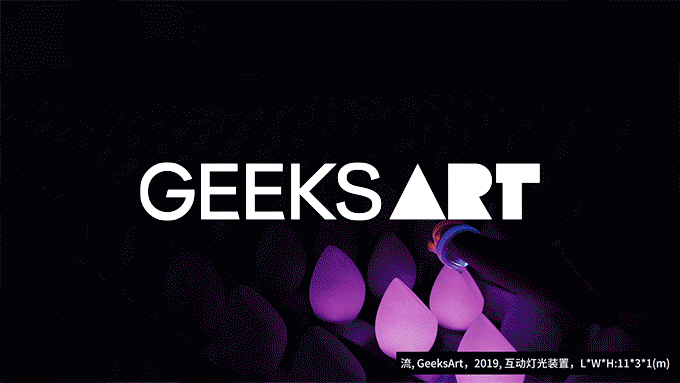▲入口与立面
▲悬于空中的L型大梁
汉阳造 Arsenal
/
厂房的所在地,为清末张之洞创办的汉阳兵工厂原址,现“汉阳造”文化创意园第17号厂房。
翻看历史地图,可以发现它一直处在兵工厂范围的西南角:1899年(光绪二十五年),依托两江交汇的南岸嘴,西兵工厂、东铁厂的格局初见端倪;1930-1939年,兵工厂的规模逐渐扩大,来自大冶的铁矿、萍乡的煤矿,经长江从南岸嘴各码头上岸,由铁路穿过兵工厂,再一路向西;1949年,渡江战役前,南岸的兵工厂被拆除一空;1951年起,鹦鹉磁带厂依托原址的西南角始建,并逐步填满整个南岸嘴西侧;2012年起,工厂全部搬离,残存的厂房被陆续出租,另做它用。
▲项目所在地历史地图
▲汉阳造历史地图
17号厂房的上一任业主是个婚纱摄影,整个建筑里外都被刷得通体洁白。我们通过不断地拆除、冲洗、打磨、填补… 一点点的将其还原成最初的样貌:红砖墙体+木屋架。在此基础上,开始植入新的功能。
▲厂房复原过程
The plant is located at the site of the Hanyang Arsenal founded by Zhang Zhidong in the late Qing Dynasty, and is now the No.17 factory of the “Hanyangzao” Cultural and Creative Park.
Looking at the historical map, you can see that our site has always been in the southwest corner of the arsenal range: In 1899, relying on the intersection of the two rivers, the pattern of the arsenal began to emerge; From 1930 to 1939, the scale of the arsenal gradually expanded; In 1949, before the “Battle of Crossing the Yangtze River”, the arsenal was dismantled; Since 1951, the parrot tape factory was built on the southwest corner of the original site, and gradually filled the entire area; Since 2012, all the factories have been moved away, and the remaining factories have been rented out successively for other uses.
The previous owner of No.17 factory was a wedding photographer, which painted the entire building white inside and out. Through continuous demolition, washing, polishing, and filling… we gradually restored it to its original appearance: red brick walls + wooden roof structure. On this basis, new functions began to be integrated.
夹缝 Narrow Gap
/
历经园区多轮的修修补补,17号厂房所处的位置已经变得非常闭塞,被陆续加建的厂房、宿舍楼、仓库紧紧包围。唯一的出入口只剩下朝西的山墙,躲在两栋房子的夹缝与茂密的树丛后。
▲厂房周边环境
为了从邻居们的挤压中突围,我们把针对正立面及其前场的设计操作,控制在中轴线上的一个极小的区域内,在躲开邻居干扰的同时,也将效果尽可能的推向极致:门洞是一条600mm宽的缝,从上到下贯穿立面,再转折为一条600mm宽的路径,贯穿前场,画出一条一人宽、20m长的线。这意味着,所有的访客,必须排好先后,依次登上步道,在杂乱的周遭环境中,带着些许仪式感与敬畏心的鱼贯而入。
▲入口夜景
▲立面及前场设计
原立面上就有的扶壁柱,在新门洞的两侧对称而立,也是600mm宽,我们在柱脚各放置了一个板凳,像卫兵一样,拱卫着长长的中轴线。
▲立面扶壁柱
After multiple rounds of expansion of the park, the location of the No. 17 factory building has become very secluded, surrounded by successively added factories, dormitories, and warehouses. The only entrance is now only the west gable, hidden behind the gap between two houses and dense trees.
To break free from the pressure of the neighbors, we confined the design operations for the front facade and its forecourt to a very small area on the central axis, avoiding interference from neighbors while also pushing the effect to the extreme: the gateway is a 600mm wide slit, running from top to bottom through the facade, then turning into a 600mm wide path, cutting through the forecourt, drawing a line 20 meters long and one person wide. This means that all visitors must queue up, one by one, to climb the path, entering with a sense of ritual and reverence amidst the chaotic surroundings.
The original buttress columns on the facade stand symmetrically on both sides of the new gateway, also 600mm wide. We placed a bench at the base of each column, like guards, guarding the long central axis.
马头 Horse head
/
虽然建筑的外立面,收缩得只剩下一条缝,但建筑里的内容:当代艺术,仍以一种冲突的方式,从夹缝中喷涌而出。
▲夹缝中的雕塑
伸到外面来的,是我们从众多馆藏中挑选的一尊马头雕塑,由红砖与水泥铸造而成。它在质地上,与建筑融为一体,在形式上,又让抽象的前场空间变得具体、生动。马头立于一根L型大梁之首,大梁悬挑出立面3米,以门过梁为支点,被纯钢板打造的“重量级”前台从另一端拉住。
▲悬于空中的L型大梁
马头与L型大梁,作为建筑立面上的视觉焦点,悬于3.3m的高度,一个在感官上似乎触手可及的高度,调整了整个前场空间的高宽比与注意力。
▲马头与L型大梁
Although the exterior of the building has shrunk to just a slit, the content inside—contemporary art—still bursts out from the crevice in a conflicting manner.
Which comes out is a sculpture of a horse’s head, cast in red brick and cement, selected from all the collections. Materially, it blends in with the architecture; Physically, it makes the abstract front space become concrete and vivid. The horse head stands at the head of an L-shaped girder that overhangs the facade for 3 meters, with the lintel of the door as the fulcrum, and is pulled from the other end by a “heavy” reception made of pure steel plate.
The horse head and L-shaped girders, as visual focal points on the building facade, hang at a height of 3.3m. It is a height that seems palpable in the senses, adjusting the aspect ratio and attention of the entire forecourt space.
展架 Display rack
/
作为一个当代艺术空间,其藏品在类型与尺寸上都是千奇百怪的:上墙的画与照片、上桌的工艺品;放在地上的雕塑、挂在天上的装置;还有需要屏幕才能呈现的影像… 而且业主的藏品数量远远超出该空间的承载极限,所以需要周期性的轮展,几乎不会有固定展品。
▲部分展品类型与尺寸
因此,除了悬在前院里的“马头”,我们无法为任何一件艺术品量身定制“展位”,这里需要的是一套可适应各种变化的“展架系统”。
根据厂房的柱间距,及展品尺寸,我们确立了1450mm×2650mm的基本模数,两个一组形成一个“展架单元”。它们可以附在墙面上,也可以90度开启成隔间,或对折缩短长度,还能组装成可移动的展台与长桌,来应对不断变化的展陈主题和需求。
▲可变化的展架系统
As a contemporary art space, its collections are diverse in type and size: paintings and photographs on the wall, crafts on the table; sculptures on the earth, installations in the sky; and images that require a screen… Moreover, the number of the owner’s collection far exceeds the carrying limit of the space, so it needs periodic rotation exhibitions, without any fixed exhibits.
Therefore, apart from the horse head hanging in the front yard, we cannot tailor-made “display stands” for any single artwork. What is needed here is a “display system” that can adapt to various changes. According to the column spacing of the workshop and the size of the exhibits, we have established the basic modulus of 1450mm×2650mm, each two of them is combined to form a “display unit”. To respond to the ever-changing exhibition themes and needs, they can be attached to walls, or opened at 90 degrees to form a compartment, or fold in half to shorten the length, or assembled into movable stands and long tables,
行车 Travelling crane
/
厂房有两套相互独立的结构体系,这是很多工业建筑都会有的典型空间语言:一套是建筑的,支撑屋顶的砖柱;一套是工业生产的,支撑行车轨道的牛腿柱。然而,厂房数度易主,整个行车系统已不见踪迹,牛腿柱也年久失修、残破不堪。我们在每根牛腿柱上增加了抱箍作为结构加固,并以此为核心恢复了整个工业生产体系:抱箍一方面用来连接展架的转轴,一方面也用来支撑起新的行车轨道。
▲两套互相独立的结构体系
▲结构加固并恢复行车
装上电机后,闪着灯的行车在厂房内前后开动,起到划分展区的作用。更加重要的是,作为一个工业遗产改造,我们希望在保存其物质空间环境的同时,它还能依稀按着当年的工业生产逻辑运转起来。
▲行车划分展区
The plant has two sets of independent structural systems, which is a typical spatial language of many industrial buildings: one is for architecture, the brick columns that support the roof; one is for industrial production, the cement columns that supports the crane track. However, the workshop has changed owners several times, the entire travelling crane system has disappeared, and the columns has fallen into disrepair and decay. We restored the entire industrial production system by adding hoops to each columns as structural reinforcement: on the one hand, the hoops are used to connect the rotating shaft of the display racks, on the other hand, they are used to support the new crane track.
After the motor is installed, the crane with flashing lights moves back and forth in the factory, which plays the role of dividing the exhibition area. More importantly, as an industrial heritage renovation, we hope that while preserving its physical space environment, it can still function according to the logic of industrial production from those days.
历史和砖墙
垒成斑驳的梦想
透过汉阳造的枪筒
映出南岸嘴的绮丽风光
鹦鹉赋的哨鸣
在白云中回响
又渐渐远去
意念的红斑马
越过雾霭里的绿洲
昂首向着朝阳
黑暗的剪影中
疑惑 沧桑
塞满熊罴的行囊
希冀沿着踽踽前行的足迹
一叭走向未来
一趴留给过往
——胡乾午
项目主创:胡兴,刘常明,李哲
设计团队:严春阳,罗婷锴,谭文骏,曾琪,黄垚,唐子骥,张喆
设计单位:青微舍(武汉)工作室
联系邮箱:contact@studio-qing.com
深化设计:武汉市东通装饰设计工程有限公司
深化设计团队:胡雪煜,池强
灯光设计:武汉镁池林文化创意有限公司
灯光设计团队:林煜轩,陈晨
激光设计:武汉云眸科技有限公司
激光设计团队:刘必成,张敏,刘方
施工方:武汉铤峻设计营建有限公司
施工团队:刘东,黄建建,张永忠
项目地址:武汉市“汉阳造”文化创意园17号厂房
面积:700㎡
竣工时间:2024年9月
建筑材料:金属漆(一克森林),洁具(ARROW 箭牌),灯具(恩柏照明)
策划及出品:上海啪咕啪咕艺术服务有限公司 P.art Group
业主:东通菜园 do2on Garden
摄影:此间建筑摄影,赵奕龙
Leader architects: Hu Xing, Liu Changming, Li Zhe
Design team: Yan Chunyang,Luo Tingkai,Tan Wenjun,Zeng Qi,Huang Yao,Tang Ziji,Zhang Zhe
Design unit: Qing Studio
Contact email: contact@studio-qing.com
Technical design:Wuhan Dongtong decoration design engineering Co., LTD
Technical design team:Hu Xueyu, Chi Qiang
Lighting design: Wuhan magnesium Chilin cultural creativity Co., LTD
Lighting design team: Lin Yuxuan, Chen Chen
Laser design: Wuhan Yunmou Technology Company Limited.
Laser design team: Liu Bicheng, Zhang Min, Liu Fang
Construction contractors: Wuhan Tingjun Design and Construction Co., LTD
Construction team:Liu Dong, Huang Jianjian, Zhang Yongzhong
Project address: Wuhan “Hanyangzao” cultural creative Park No.17 workshop
Area: 700 ㎡
Completion date: 2024.09
Materials: Metallic paint (1g Forest), Sanitary ware (ARROW), Lamps (BOURNS)
Planning and production: P.art Group
Client:do2on Garden
Photography: Zhao Yilong


.jpg)
.jpg)



.jpg)
.jpg)
.jpg)

.jpg)
.jpg)


.jpg)

.jpg)

.jpg)








